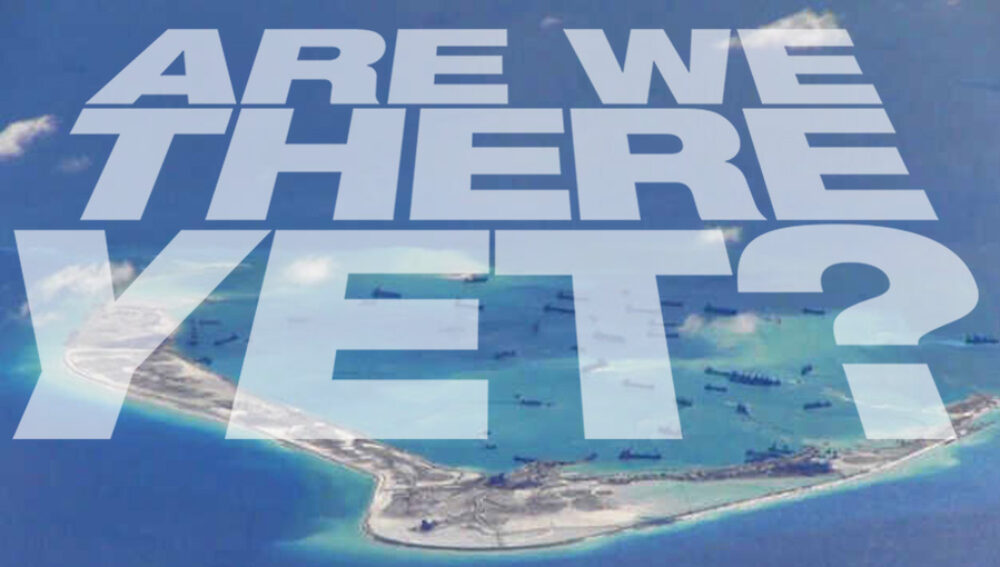In June this year the 35th ASEAN Summit delivered the release of ASEAN’s long-awaited Outlook on the Indo-Pacific. The Outlook provides a common script for ASEAN states when it comes to navigating the region and reaffirms ASEAN’s central position in what is becoming a crowded and contested space.
In recent years ASEAN has come under increasing criticism for internal divisions between members and its perceived inability to reach a consensus on key regional issues. One could argue that the ASEAN Outlook on the Indo-Pacific is proof that the grouping can achieve strategic cohesion—when it wants to.
So, with a fresh collective vision of the Indo-Pacific, is the time now ripe for ASEAN to conclude the highly-anticipated Code of Conduct (COC)? While the Outlook on the Indo-Pacific avoids any mention of a major power (i.e., the United States and China) and discussion of sensitive political and security issues, a COC concerning the South China Sea may be what’s needed to formally institutionalise the ‘Indo-Pacific’ in ASEAN.
With Vietnam—a vocal claimant state—as the 2020 ASEAN Chair, what is the current status of the COC and what developments (if any) can we expect to see during Hanoi’s chairmanship?
Developments towards a Code of Conduct
Conversations around a potential COC first began at the 2002 ASEAN Summit, in response to mounting tensions in the South China Sea. The COC seeks to manage inter-state relations within the South China Sea area and address disputes over territorial claims in the contested waters. The COC is based on a 2002 Declaration on the Conduct of Parties in the South China Sea signed by China and the 10 ASEAN states. In November this year, it was announced that China and ASEAN member-states had reached “an effective and substantive Code of Conduct in the South China Sea (COC) within a mutually-agreed timeline”. A single draft of the COC was put forward in August 2018. Both ASEAN and China have agreed to complete the COC by 2022.
Many have pointed to the slow progress of the COC’s drafting, raising questions as to when the completed document will actually be released. Senior ASPI analyst, Huong Le Thu, has referred to the COC as a ‘holy grail’—idealistic and highly desired, but difficult to attain. Vietnam has been at the forefront of the negotiations, advocating for peaceful communication concerning the resolution of disputes in the South China Sea; although Vietnam has been clear that the COC won’t limit or prevent states from seeking peaceful settlement under Article 33(1) of the Charter of the United Nations.
The current draft will serve as the basis for the adoption of a COC in the South China Sea. According to Carl Thayer, the draft reinforces the language in the Framework Code of Conduct, stressing that it is “not an instrument to settle territorial disputes or maritime delimitation issues”. The draft appears vague and does not clearly touch on the most sensitive issues surrounding the COC—geographic scope, dispute settlement mechanisms and legal status.
What about Beijing?
The July 2019 release of Beijing’s White Paper, entitled China’s National Defence in the New Era, defended China’s national sovereignty, territorial integrity and interests in the South China Sea. The White Paper labelled the South China Sea and the disputed Diaoyu islands as an “inalienable part of the Chinese territory”. Beijing appears to be looking favourably on the progress of the COC. In November 2019 at the 22nd China-ASEAN (10+1) Leaders meeting in Bangkok, the Chinese Premier Li Keqiang commented that “all sides must uphold peace friendship and cooperation in the South China Sea and safeguard lasting peace and stability in the region”.
Outcomes from the 35th ASEAN Summit 2019
In the Final Communique from the 35th ASEAN Summit, ASEAN welcomed the completion of the draft and practical measures to “reduce tensions and the risk of accident, misunderstandings and miscalculations” (Section 50). In section 51, ASEAN reaffirmed the importance of “non-militarisation and self-restraint” in the South China Sea by both claimant and non-claimant states. While many have criticised ASEAN for its vagueness around when the COC will be completed, ASEAN statements remain committed to the issue.
What can we expect from Vietnam’s 2020 chairmanship?
Vietnam has been proactive in COC negotiations, and Hanoi consistent in terms of its position on key issues. 2020 will see Vietnam as the Chairman of ASEAN, as well as a non-permanent member of the United Nations Security Council. As a result, Vietnam will face ample opportunity and great challenges as it has access to two major political platforms. The last time Vietnam held chairmanship was in 2010. Since then, Hanoi has strengthened its relationships with major powers but also encountered domestic challenges, particularly concerning the legitimacy of its leadership.
Vietnam has adopted the theme ‘Cohesive and Responsive’ for ASEAN 2020. Given Beijing’s wording in its 2019 White Paper, we should expect to see some assertive requests put on the negotiating table concerning the final version of the COC, and Vietnam will have to steer the bloc through negotiations as they evolve next year. While ASEAN is a consensus-based organisation, four of the ten members are claimant states, and in recent years Cambodia, Myanmar and the Philippines have been positioning themselves closer to Beijing.
Finalising an agreement on the COC that is unanimously agreed to by all 10 ASEAN members and China may prove difficult due to different national interests and foreign policy relationships with Beijing. It remains uncertain if all 11 states involved in finalising the COC can reach an agreement that doesn’t displace ASEAN’s regional footing. But ASEAN’s long-awaited release of the Outlook on the Indo-Pacific may be the impetus the grouping needs. After all, ASEAN’s legitimacy and realisation of the Indo-Pacific concept could depend on it.
Claire Doherty and Dr Lucy West
Claire has recently completed a 12 week research internship at the Griffith Asia Institute under the supervision of Dr Lucy West, as part of her Bachelor of Asian Studies and International Relations course requirements.








